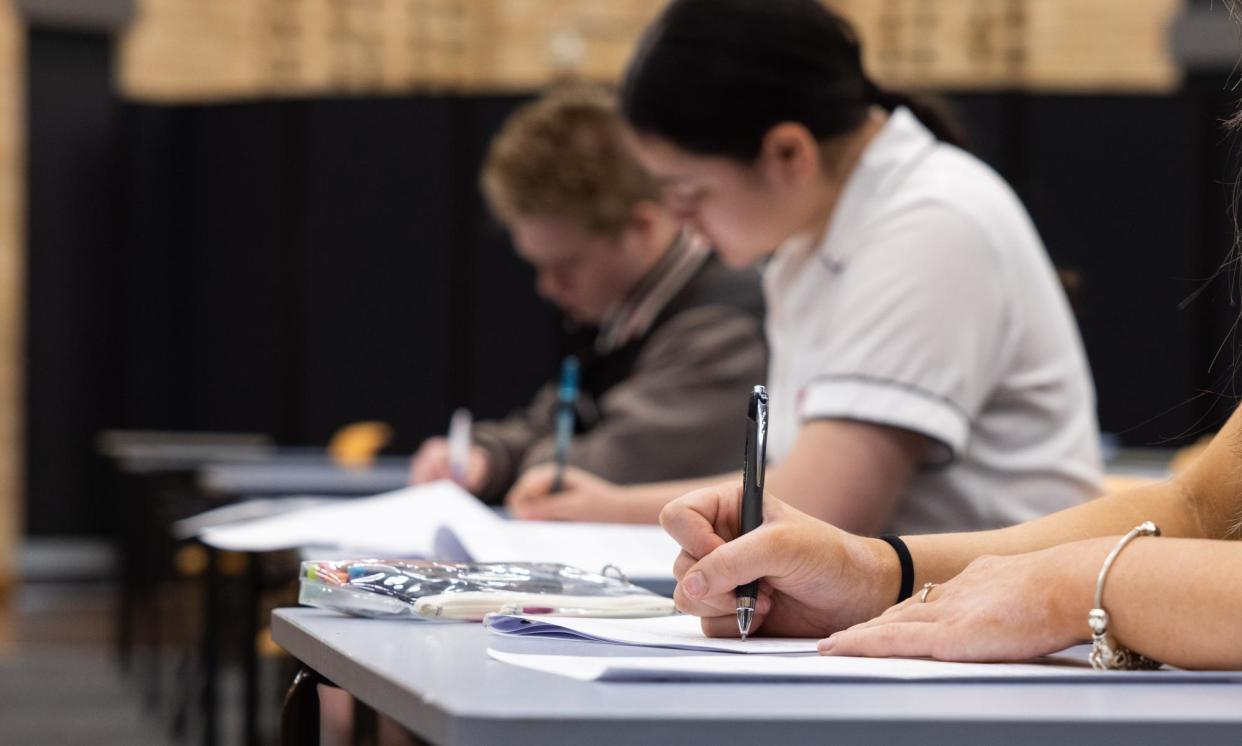Funding for Australian school students with disabilities ‘woefully inadequate’, principals say

Principals and teachers say funding to support students with disabilities is “woefully inadequate”, with schools diverting resources from other areas of their budgets to meet their needs.
A new national survey of 15,000 principals and teachers reports that just 11% of principals feel they have sufficient resources to support the educational needs of students with disabilities.
When asked what resources they were lacking, 80% of principals said they needed extra assistance in the classroom, with more than half nominating more teachers, specialist support and professional development as lacking.
Almost 20% of the principals surveyed in the Australian Education Union survey said they lacked “appropriate hygiene facilities”, while about half said they did not have appropriate learning spaces to accommodate children with disabilities.
Related: Students as young as five with disabilities disproportionately suspended from Australia’s schools
The average amount of funding that principals are reallocating from other areas to support students with a disability is $158,000 this year, a 20% increase in the past 12 months. This equates to almost $1bn when averaged out across 89% of Australian schools.
One Queensland primary school principal reported through the survey that a blind child at the school could not have a teacher’s aide unless it was funded through the operations budget.
Another in the state reported that a level 3 autistic child who was non-verbal was allocated just six hours of teacher aide time when he required 30 hours, which the school funded by diverting other resources.
“He is a safety risk to himself when not monitored closely [and] by giving time to this child we take from others who need it,” the survey was told.
An ACT-based school reported a $300,000 staffing debt each year in order to fund assistants rather than go without, while a Melbourne-based primary school reported a $500,000 deficit as a result of needing extra support staff who were not otherwise funded.
In WA, one principal reported that a wheelchair-bound student who required assistance with toileting every 20 minutes was “not entitled to full-time support”.
“Disability funding is entirely inadequate,” the principal said.
Inclusive education means students with a disability are involved and supported in a mainstream school environment and school community with all other students.
This means that students with a disability are integrated into mainstream classes to learn with their peers and are not segregated into different programs or schools.
Inclusive education requires schools and teachers to make “reasonable adjustments” for their disabilities to enable this to happen.
The disability royal commission found that Australian schools did not consistently deliver an inclusive education that protected students with disability from violence, abuse and neglect.
It said that students with disabilities faced multiple barriers to inclusive education, “underpinned by negative attitudes and low expectations".
The obligation to ensure an inclusive education system is recognised under international law through the United Nations convention on the rights of persons with disabilities (CRPD) to which Australia is a signatory.
The Australian government has sought to meet its obligations under the CRPD by imposing obligations on schools to comply with the Disability Discrimination Act 1992 and the Disability Standards for Education 2005.
Teachers also reported that students categorised as needing the lowest level of support – requiring Quality Differentiated Teaching Practice – in fact needed additional funding support above this level.
Teachers listed needs such as assistive technology, more time, more professional support, smaller class sizes, and greater access to teacher’s aides as among the most pressing.
“I feel sorry for some of the students with autism at my school, they need more than we can give in a traditional classroom setting … They need more specialist support than we are able to give,” one teacher reported.
Only about a third of teachers reported that the professional development training they received had given them “the knowledge and skills” needed to teach students with a disability, compared with about half in 2020.
The AEU national president, Correna Haythorpe, said modern classrooms were increasingly complex and support for children with disabilities needed to be prioritised as part of the current negotiations for the next national schools reform agreement.
“We are seeing rapid increase with respect to students with disability but also significant concerns around the lack of funding that is available to meet those needs,” she told Guardian Australia.
“Students with disabilities are not getting enough dedicated funding from government. The problem is real, schools are trying to manage this in the best way that they can, and they have to be backed by governments with the resources that they need.”
Haythorpe said there was a “joint responsibility” for both state and federal governments to improve access to education for students with disabilities.
She said it was “shocking” that many public schools did not even have adequate bathroom facilities and accessible toilets for students with disabilities, while at the same time private schools were receiving lucrative government grants for capital projects.
“Every child has a right to access education and for students with disability, it’s very important that high-level access to inclusive education is provided, but we have a system that is not fulfilling that need.”


